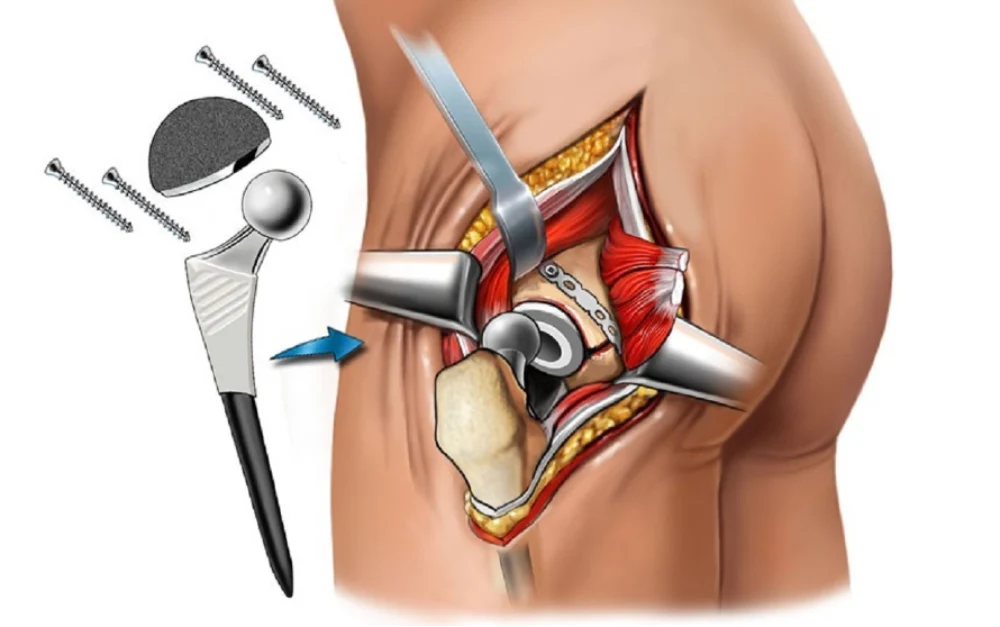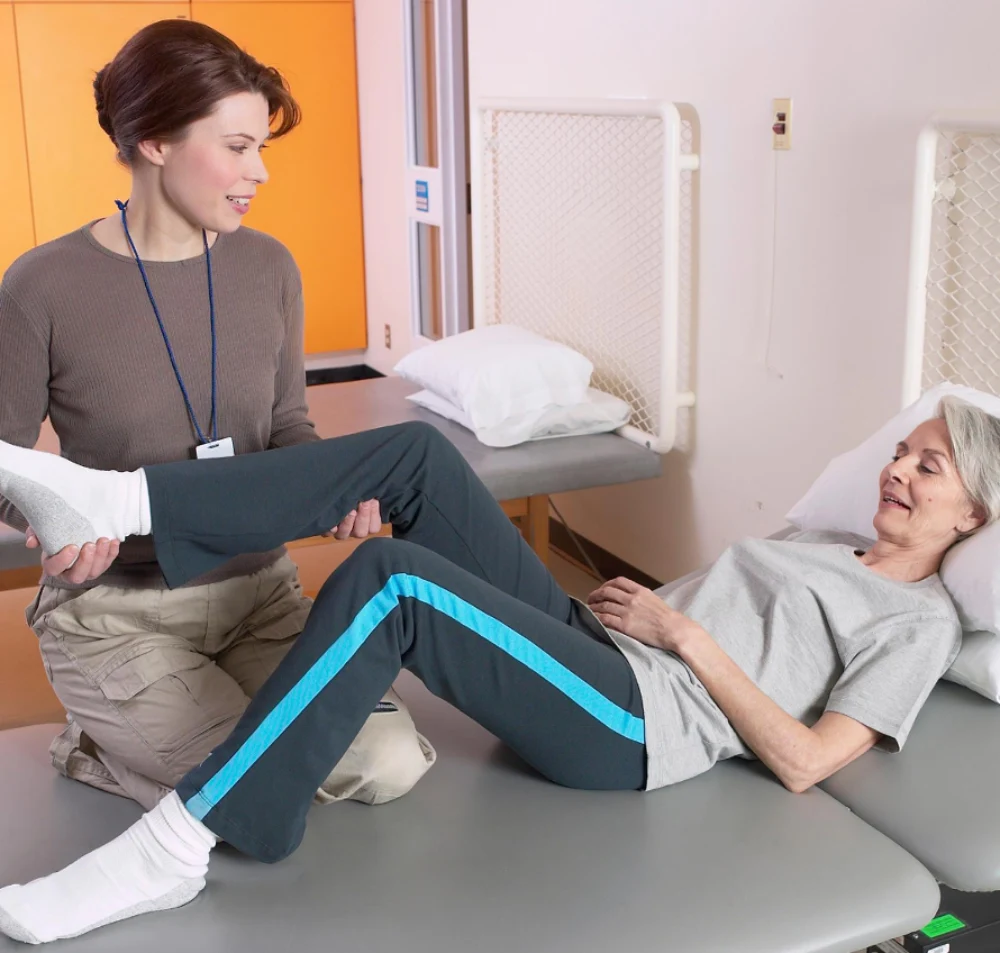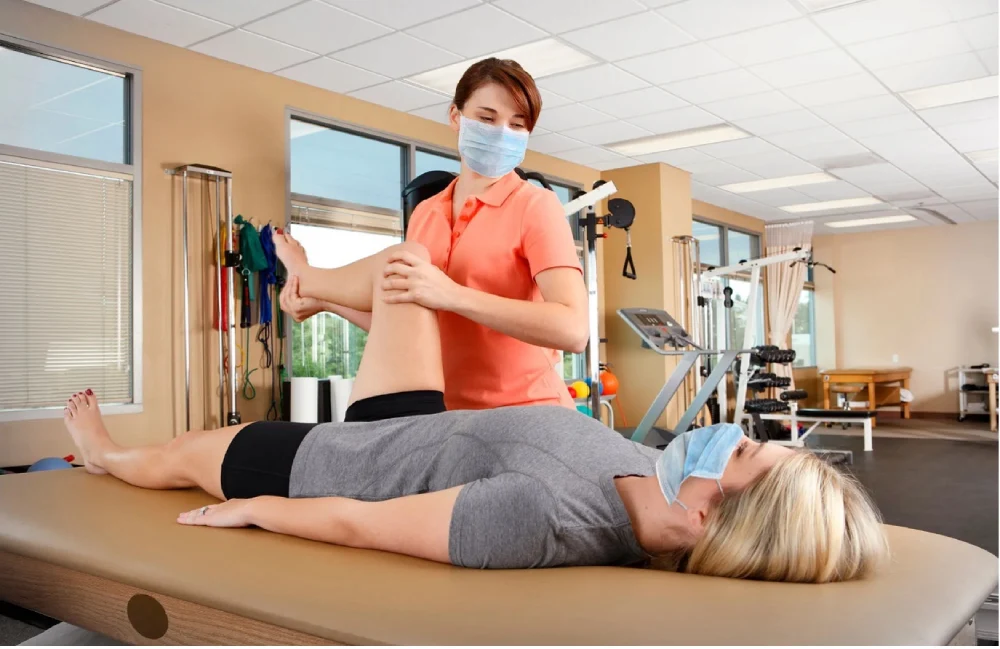Total hip arthroplasty, another name for hip replacement surgery, is a popular technique used to relieve hip joint damage-related pain and restore function in patients. Even though the surgery is a transforming process, its outcome frequently depends on the post-operative rehabilitation activities West Vancouver . A series of focused hip exercises after hip surgery intended to increase muscle strength, flexibility, and general mobility and is the base of this rehabilitation. In this article we will explore details about exercises post hip replacement.

Precautions and Guidelines of Exercises After Hip Replacement
Setting limits and safety measures is crucial before beginning any particular exercises to do after hip replacement. A patient’s healthcare provider should always be consulted before beginning an exercise regimen. Comprehending personal limitations and following guidelines are essential for averting difficulties and ensuring secure recuperation. Additionally, patients should be careful to progressively advance their workouts while working with a physiotherapist or rehabilitation specialist.
Levels of Hip Replacement Rehab Exercises
The progression through various exercise levels is a key component of hip replacement recovery. These hip replacement rehabilitation exercises are specifically created to increase general function, increase flexibility, and strengthen muscles at different times after surgery.
Immediate Post-Op Exercises
What is the best exercise after total hip replacement? Patients are started on mild workouts immediately following hip replacement surgery with the goals of increasing circulation, avoiding blood clots, and starting muscle activation. These workouts usually include short walks using crutches or walkers, quadriceps sets, gluteal squeezes, and ankle pumps and circles.
Intermediate Exercises (2-6 weeks post-surgery)
Patients can progressively add more difficult activities to their recovery regimens to help strengthen the muscles surrounding their hip joints. What is the best exercise after hip replacement surgery? To increase the range of motion and develop endurance, this stage may involve heel slides, straight leg raises, hip abduction and adduction, and stationary cycling.
Advanced Exercises (6-12 weeks post-surgery)
Patients may move to more challenging exercises six to twelve weeks after surgery to enhance hip strength, stability, and functional mobility. To mimic daily tasks and encourage general independence, these exercises could include leg presses with light resistance, clamshells, bridging movements, and hip flexion and extension.
After hip replacement surgery, it’s important to consult with a healthcare provider before starting exercises. Progressing through levels of post op hip replacement exercises, from immediate to advanced, helps restore function and mobility safely under supervision.

Home Exercise Program for Hip Fracture
Following hip replacement surgery, a home exercise regimen is essential to ensuring continuity of care and fostering long-term healing. Patients and their healthcare providers should collaborate closely to create a customized program that meets their requirements and objectives. What exercises after hip replacement? A variety of stretching, strengthening, and aerobic activities should be included in this program, depending on the participant’s functional skills and degree of fitness.
Common Challenges and Solutions
Even though hip replacement surgery rehabilitation is usually successful, people may experience difficulties during the process. Common obstacles that can be overcome include controlling pain and discomfort, dealing with movement anxiety, and getting past muscle weakness and stiffness. These issues can be resolved with the right support, information, and workout modifications.
What is the Best Exercise After a Total Hip Replacement
Exercises after hip replacement surgery focus on gradually strengthening the muscles around the hip joint, improving flexibility, and enhancing overall mobility. What are the best exercises after hip replacement? They include:
1. Walking
Walking is a low-impact workout that increases circulation and endurance. Take small walks at first, then as you feel comfortable, lengthen and intensify them.
- The Quadriceps Sets
In this exercise, the thigh muscles are tightened while the person is seated or lying down, held for a brief period, and then released. It contributes to the strengthening of the front thigh muscles, which are crucial for walking and stability.
- Straight Leg Raises
One of the hip exercises after hip replacement is leg rise. While lying on your back, bend one leg and straighten the other. Raise the straight leg a few inches off the ground, hold it there for a little while, and then bring it back down. The hip and thigh muscles are strengthened by this workout.
4. Hip Abduction/Adduction
Take a seat in a chair with your feet flat on the ground and your knees bent. Move the leg that was operated on slowly out to the side and then back in toward the body’s midline. Enhancing hip stability and strength is the goal of this workout.
- Bridging
Lay flat on your back with your feet flat on the ground and your knees bent. Form a straight line with your shoulders and knees as you raise your hips off the ground, then bring yourself back down. Bridging makes the hamstrings and glutes stronger.
6. Stationary Cycling
Without overstretching the hip joint, stationary cycling improves the muscles surrounding it and aids with hip mobility.
7. Clamshells
Lay on your side with your hips stacked and your knees bent. As much as you can open the top knee while maintaining a solid pelvis while keeping the feet together. The hip lateral muscles are the focus of this workout.
8. Heel Slides:
Lay flat on your back with your feet flat on the ground and your knees bent. To straighten the operated leg, slide it out and then back in. Hip flexion and extension are enhanced by this workout.
9. Leg Press
Use your heels to push the weight away from your body using a leg press machine or resistance bands. The thighs and hip muscles get stronger with this exercise.
tbi rehabilitation exercises
10. Balance Exercises
To increase stability and lower the chance of falling, include balance exercises like standing on one leg or using a balancing board.
Post operative hip replacement exercises focus on strengthening muscles, improving flexibility, and enhancing mobility. Effective exercises include walking, quadriceps sets, straight leg raises, hip abduction/adduction, bridging, stationary cycling, clamshells, and heel slides.

Conclusion
We explored strengthening exercises after hip replacement in this article. Exercises play a key role in the rehabilitation journey following hip replacement surgery. By following a structured exercise program, patients can regain strength, flexibility, and function to improve their quality of life and facilitate a smooth transition back to daily activities. With proper guidance and dedication, individuals can achieve successful outcomes and enjoy the benefits of a pain-free hip joint post-surgery.
To get an appointment for all kinds of massage and west vancouver chiropractors , etc., contact us through the Radial website.
shoulder rehabilitation exercises
Hip Exercises After Hip Surgery in West Vancouver Clinic
Post op exercises for total hip replacement at the West Vancouver Clinic are customized to meet the specific needs of each patient and their stage of recovery. The goal of these exercises is to minimize pain and encourage safe healing while strengthening, extending, and regaining the range of motion in the hip joint. Through a focus on the appropriate form and following the recommended workout schedule by experienced practitioners, West Vancouver Clinic guarantees that patients recover their health. Call us today to set an appointment.